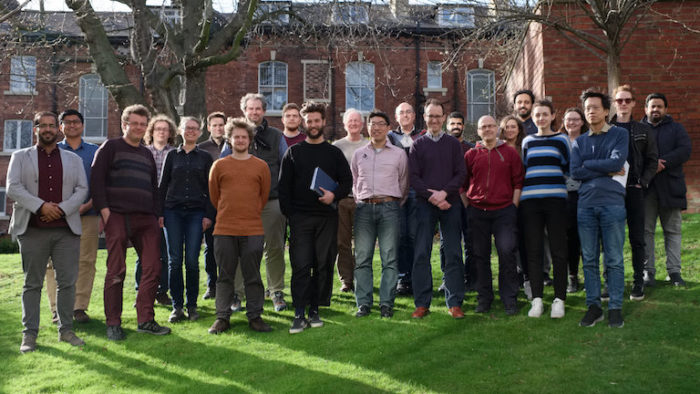About Us

Group History
Physics was established as an academic discipline in Leeds in 1874 with the founding of the Yorkshire College of Science. Lord Cavendish (from the same family as Henry Cavendish and son of the Duke of Devonshire) was a local MP and member of the council of the Yorkshire College. Following his murder in Phoenix Park in 1882, the College established the Cavendish Chair of Physics in his memory. Notable holders of the chair have included W Stroud (formed the company Barr and Stroud) 1885-1909, W H Bragg (his experimental X-ray work for which his Nobel Prize was awarded was done in Leeds) 1909-1915 and E C Stoner 1951-1963, famous for magnetism and more recently recognised, astrophysics. The University of Leeds was established in 1904 following the dissolution of the Victoria University.
After the death of E C Stoner in 1963, solid state physics came under the guidance of J S Dugdale (1965-1987) where the group focus was on electron transport and magnetic properties of bulk metals. With the arrival of G J Morgan (1969) the emphasis shifted to the study of quantum interference effects in disordered and glassy metals. In 1989 the group, led by D Greig, acquired an MBE machine and worked on giant magnetoresistance and magnetic multilayers.
From 2006 onwards, the group gradually consolidated into a strong cross-linked and coherent set of programmes as new academic members joined with research interests that could build upon and extend the core expertise and facilities in thin film growth.
Today the group comprises 7 academic staff and is led by B.J. Hickey (appointed 1990, chair 2000) and works on on electron and spin transport in materials and across interfaces. In 2018 the group group acquired the Sir Henry Royce Institute multi-technique thin film deposition system - a major national investment in advanced materials research. This £2.2M investment in a multi-chamber state of the art UHV deposition tool provides capabilities to grow a wide range of functional thin film materials, including topological insulators and superconductors, complex oxides, organic layers and metallic multilayers in any desired combination to investigate novel emergent phenomena at interfaces.
